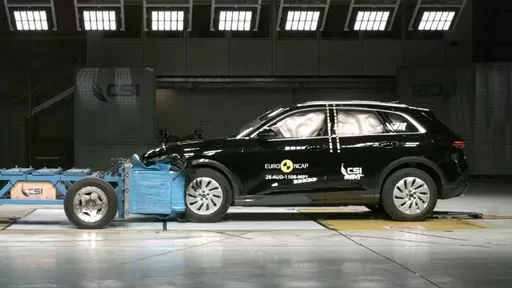Leuven, Belgium – Euro NCAP (European New Car Assessment Programme) has once again proven its commitment to improving vehicle safety with the testing of 16 new cars. The latest round of tests has highlighted the continuous efforts of Euro NCAP to ensure the safety of all road users.
Euro NCAP is an independent organization that conducts crash tests on new cars to assess their safety performance. The organization was established in 1997 and has since become the leading authority in vehicle safety testing. Its mission is to provide consumers with transparent information on the safety of new cars and to encourage car manufacturers to improve the safety of their vehicles.
In the recent round of tests, Euro NCAP evaluated 16 new cars, including popular models such as the Audi A1, BMW X5, and Ford Focus. The results were encouraging, with all 16 cars achieving a minimum of four out of five stars for overall safety. This is a significant improvement compared to the first round of tests in 1997, where only four out of 11 cars achieved four or five-star ratings.
One of the key reasons for this improvement in safety ratings is the continuous evolution of Euro NCAP’s testing protocols. Over the years, Euro NCAP has introduced new and more stringent tests, making it challenging for car manufacturers to achieve top ratings. This has led to a significant shift in the automotive industry, with car manufacturers prioritizing safety in their vehicle designs.
Euro NCAP’s testing protocols cover a wide range of safety criteria, including adult occupant protection, child occupant protection, pedestrian protection, and safety assist features. The latest round of tests showed that all 16 cars achieved good results in adult occupant protection, highlighting the significant progress made in this area by car manufacturers.
In terms of child occupant protection, 13 out of 16 cars achieved good results, with most cars scoring full marks for child protection in the frontal and side impact tests. This is a testament to the efforts made by car manufacturers to ensure the safety of younger passengers.
Pedestrian protection is another critical aspect of Euro NCAP’s testing protocols, as it aims to reduce the number of pedestrian fatalities in road accidents. In the latest round of tests, all 16 cars achieved good results in this category, with some cars even receiving the highest score possible. This is a significant achievement, considering the complexity of designing a car that can protect both its occupants and pedestrians.
Another crucial factor in Euro NCAP’s testing protocols is safety assist features, such as lane departure warning, autonomous emergency braking, and speed assistance systems. These features are designed to prevent accidents and reduce the severity of injuries in the event of a crash. The latest round of tests showed that all 16 cars had these safety assist features as standard, highlighting the efforts made by car manufacturers to make these features more accessible to consumers.
The results of Euro NCAP’s latest round of tests are a clear indication that the organization’s efforts to improve vehicle safety are paying off. With car manufacturers continuously striving to achieve top ratings, consumers can be confident in the safety of the cars they purchase.
Euro NCAP’s testing protocols are not only beneficial for consumers but also for the automotive industry as a whole. By setting high standards for safety, Euro NCAP is encouraging car manufacturers to invest in research and development to improve the safety of their vehicles. This, in turn, leads to safer roads for all.
In conclusion, the latest round of Euro NCAP’s tests has once again highlighted the organization’s commitment to improving vehicle safety. With all 16 cars achieving good ratings and some even receiving the highest score possible, it is evident that Euro NCAP’s efforts are making a significant impact. As car manufacturers continue to prioritize safety in their designs, we can look forward to even safer roads in the future.

